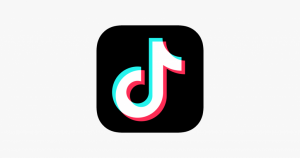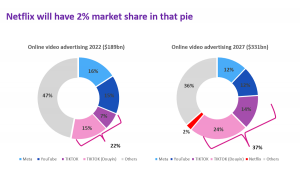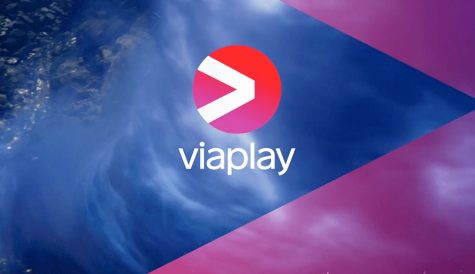Omdia: TikTok to overtake Meta and YouTube combined in video ads by 2027
 Social media giant TikTok will attract more than two thirds of online video advertising revenue by 2027, more than both Meta and YouTube combined.
Social media giant TikTok will attract more than two thirds of online video advertising revenue by 2027, more than both Meta and YouTube combined.
The findings, which were revealed today by research powerhouse Omdia at the Media & Entertainment Leaders Summit (MELS) here in London, showed that 37% of all online video ads would come from the Byte Dance-owned app.
Meta and YouTube, meanwhile, are predicted to take just 12% each, while SVOD market leader Netflix will take only 2%.
Last month, TikTok leapfrogged Netflix to become the second most popular app in the US, with only YouTube retaining the crown for under 35s viewing, according to Omdia
Speaking today at MELS, Maria Rua Aguete, senior director at Omdia, said that online video advertising is predicted to generate more than $331bn in the next five years, with the short-form video hosting service taking the biggest slice of that pie.
In the US, TikTok has already already overtaken other social media platforms as the place to watch video content, with the service’s rapid growth making it an appealing platform for advertisers seeking to reach wide audiences.
In particular, the platform appeals to young consumers, which is a highly sought after demographic by advertisers and has proved hard to reach via other channels such as traditional linear TV and other social networks, like Facebook.
“Advertisers are moving away from Meta and YouTube towards TikTok,” said Aguete at MELS. “Advertisers want to reach the followers that TikTok has.”
MELS, which is being produced by Informa’s TBI, DTVE and Omdia is taking place today with companies including TikTok, Roku, Banijay, Sky Studios and STARZPLAY taking part in discussions around the future of content creation and distribution.
Speaking on the introductory panel session at the summit, Yannis Ioannidis, head of global IP rights at TikTok/ByteDance, said that his platform was “also in the storytelling business”, which was at the core of the company’s mission.
Ioannidis said that the platform would “for the foreseeable future remain a user generated content app” although there is “space for collaboration” with content creators.
He said using premium content on the app could be challenging because TikTok is a mobile app.
TikTok also has a TV app with Samsung, but Ioannidis said that there were challenges. Content is the wrong format and TikTok could not bring its recommendation engine to TV. He said the company wanted to experiment with TV because it was an important consumption platform and because advertising CPMs are much higher on TV than on mobile or the web.




